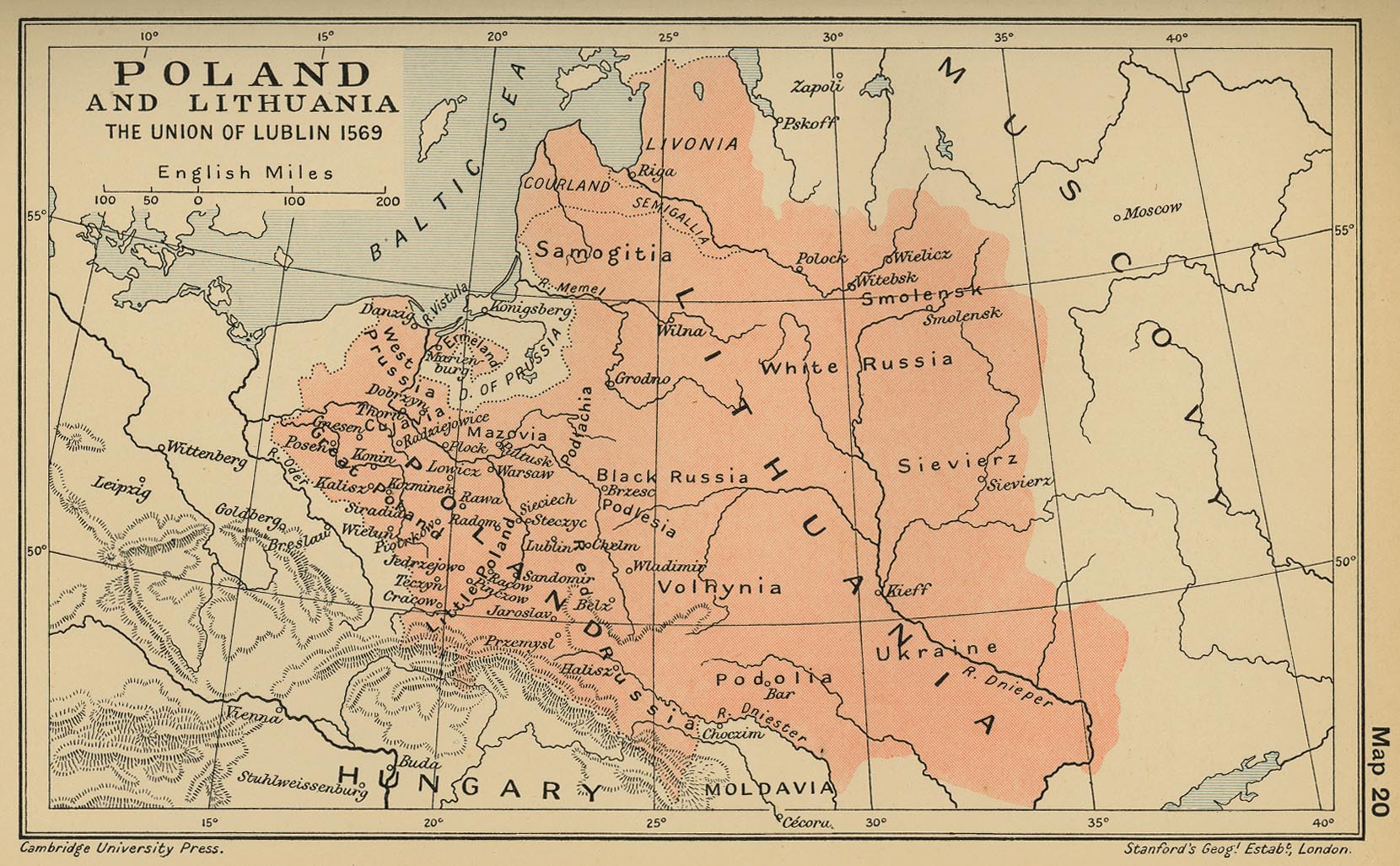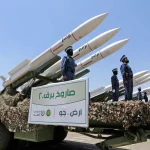First part
Statehood
The possession of a national state is the most important fact of the historical proudness of any ethnic group and, moreover, in the Anglosaxonic political philosophy, the term „nation“ is directly linked to the state or to say in other words, the terms „nation“ and „state“ are, basically, the synonyms. Therefore, only those ethnic groups in the possession of their own state, or at least in the process of striving to create/recreate it, can be called as the real nations. The others are only the ethnic groups living as the minorities in not their own political organizations. Subsequently, there are stateless ethnic groups[1] and statehood nations. Hereby for many ethnic groups, it is of a focal importance to „prove“ that historically they belong to the category of statehood nations rather than to the stateless minorities. The case of Belarussians is one of the most characteristic examples in this matter and it is in direct connection with the problem of Belarussian national identity.
It is important to notice that the modern term nation or natio is authentically coming from the Latin word nasci what originally meant „to be born“. From the very cultural point of view, a nation is a group of people who are bonded together by a common language, religion, history, customs, and traditions but politically, a nation is a group of people who regard themselves as a „natural“ members of their own political community – the state, and it is historically expressed by the common desire to establish and maintain political sovereignty or at least autonomy (like, for instance, the Catalans in Spain or the Scots in UK). Therefore, if the state is composed of its „natural“ members, it is expected by them to express the highest degree of patriotism or, literally, a love of their own fatherland that is, basically, a psychological attachment of a loyalty, based on group solidarity, to the national state or the political community by birth.[2] Subsequently, from a very psychological viewpoint, a nation is a group of people who are sharing loyalty to each other in the form of patriotism.[3] However, a group of stateless people can lack a national pride as being „inferior“ in comparison to historical (statehood) nations regardless on the fact that share common cultural and historical identity usually founded on a belief in a common descent.

For the Belarussian nationalists it is very difficult to find deeper historical foundations of their national statehood at least before the time of Russian Bolshevik Revolution and Russian Civil War of 1917−1921 when in 1918 the so-called Belarussian People’s Republic was formally proclaimed under German military occupation. At the same time, the First Belarussian Congress was convened but never took place as it was thwarted by the Bolsheviks who finally won the civil war and established a Soviet Republic of Belarussia composed by today’s eastern and central parts of Belarus while its western parts were annexed by reborn Poland according to the Bolshevik-Polish Peace Treaty of Riga on March 18th, 1921.[4] Hereby a Soviet Belarussia became a founder republic of the USSR in 1922 and, therefore, it can be treated as the first national state of the Belarussians.
We have to keep in mind that Soviet authorities established for each recognized ethnic nation a separate socialist republic as its national state within the federation system of the Soviet Union. In political theory, „the state is a political association that establishes sovereign jurisdiction within defined territorial borders…a state is characterized by four features: a defined territory, a permanent population, an effective government and sovereignty“.[5] Theoretically, it is quite clear that a state is a synonym for the country that means a formal international recognition of territory’s „independence“ is not necessary for it to be treated as a state. Hereby according to the 1933 Montevideo Convention on the Rights and Duties of States, there are three criteria of statehood:
- It possesses a stable government.
- It controls a definite territory.
- It enjoys the acquiescence of the population.[6]
It is obvious that all those three criteria were applicable in the case of Soviet Bellarussia and, therefore, it can be concluded that Bolshevik-established Soviet Belarussian republic within the USSR was historically the first national state of the Belarussians. Nevertheless, all crucial forces in fighting for a Belarus’ statehood were, in fact, of external nature but not internal, what means that a Belarus’ statehood is of the artificial (in essence, a Russophobic) nature.
Mythology
After the Russian Civil War of 1917−1921 the split of Belarussian identity kept on between two camps:
- The pro-Western nationalists, who were gaining support from Belarus’ activists from Poland for the sake to separate Soviet Belarussia from the USSR.
- The pro-Russian orientation citizens, who advocated a Russophile stance, taking into consideration a focal fact that most citizens of Belarus were of Christian-Orthodox cultural background like Russians and, therefore, Russia’s role as a fundamental cultural donor to Belarus had to be respected.
Nevertheless, in the interwar period of time from 1921 to 1939, according to the internal passport record of ethnicity, the Belarussians existed only on the Soviet but not on the Polish side.
Belarussian nationalists in the search for an appropriate historical background of Belarussian national statehood went to the area of mythology as the only instrument to be used in order to „prove“ their artificial claims.[7] The case of Belarus’ nationalists is a good example how the people, or some political groups, are willing to be engaged in a nation-building process but without previous assurance that their national history is a glorious and of a statehood nature. For the reason that Belarus’ history was not adequate at all in regard to Belarussian statehood, it was quite necessary to involve appropriate myths for the sake to „find“ a national state in historical sources. The final purpose was, in fact, to show that Belarus’ state independence after the collapse of the USSR is not a new one but rather a revival of older Belarussian statehood.
In principle, national myths and academic mythology are very useful for the creation of recombinations of the real history, or better to say, for its rewriting according to the political goals and national wishes.[8] It is clear that academic historians, philologists, linguists, ethnologists or folklorists are playing a crucial role in the process of making and spreading the myths about national identity regardless of the fact that not so much of their work is, in fact, scientifically tested truth.
As a result of Belarussian statehood mythology, it was published in 2001 in Vilnius a book by Orlov and Saganovich under the title: Ten Centuries of Belarusian History (862−1918).[9] The book is just one (but remarkable) example of the writings which direct historiography in a way to be acceptable to the pro-Western orientation of the politics by Belarussian nationalists who are being unable to find any Belarus and Belarussians in the medieval chronicles and other historical sources, understood the Grand Duchy of Lithuania (GDL) not only as the precursor of the modern state of Belarus but even as the heyday of Belarussian national statehood taking into consideration that at least more than 50% of GDL’s inhabitants have been East Slavs.[10] Even after the 1569 Lublin Union, the Slavs were majority in GDL, but according to Belarus’ nationalists, they have been exactly Belarussians and, therefore, East Slavonic language both spoken and being in official use by the state authorities in GDL (at least before 1569 when it started to be Polonized) was proclaimed to be „Old Belarussian“.
The question of language, as the language is considered as a prime marker of national identity, is of the crucial importance for Belarus’ nationalists for whom the most important task is to „prove“ in historical sources that Belarussians had and have a separate language from Russian. In reality, traditionally, Belarussian language (speech/dialect) was a rustic or peasant vernacular which was becoming more Russian or Polish as a person became urbanized and searching for a higher social position as the language was refined by an urban type of life and personal education.[11] The case of pre-WWII Vilnius is, in this matter, very illustrative: one-third of its inhabitants were speaking Jidish, Polish was speaking on the streets, in the schools, and in the churches while Belarussian was speaking in the countryside around the city. In 1939, almost no one was speaking Lithuanian in Vilnius.[12]
For Belarussian camp of the nationalists, the crucial task was to find a precursor of a modern independent language of Belarus as a proof of a separate Belorussian nationhood. This search for a major person of prominence as a writer who used Belarussian language led them to Frantsisk Skaryna (a. 1490−a. 1552), who, however, was known for the long period of time as a translator of religious texts into „the simple Russian language“ – a language which now became appropriated by Belarus’ nationalists as a precursor of modern Belarussian. There are international encyclopedias and other relevant academic publications in which F. Skaryna is clearly labeled as Russian and a translator of the Bible into Russian but not into any kind of Belarussian.[13] The Balarussification of F. Skaryna and his work are an order of the day for Belarussian nationalists as he is, in fact, seen as a father of modern Belarus’ national language and, therefore, at the same time, and of a contemporary Belarussian nation as a separate ethnolinguistic group (especially from Russians).
During the last quarter of a century, Belarus is faced and with the question of national symbols which are reflecting at high degree the national identity and political orientation features. The politics of national symbols (flag & coat of arms) are supported by different mythologies and political orientations – pro-Western and pro-Russian. The first group insists on the use of the symbols more related to GDL while the second camp is supporting the use of the state symbols from the Soviet era officially introduced in 1995 and, therefore, current Belarus’ flag and national emblem are the only ex-Soviet insignias in the official use. As a result, Belarussians are today the only post-Soviet nation that returned to its Soviet emblems for two reasons:
- It confirms the historical fact that Soviet Belarus was the first and, therefore, authentic national state of Belarussians.
- It shows the wish of the majority of the population that Belarus’ political and national orientations have to be directed toward the East (Eurasian integration) rather than toward the West (NATO/EU integration).
Between West and East
It has to be explained why today majority of Belarus’ citizens have quite positive attitudes toward Russia – a country seen by them as the most reliable partner of Belarus. As a matter of fact, Belarus was after the WWII one of the Soviet republics which mostly benefited from its membership of the USSR for the very reason that it was properly industrialized despite its lack of mineral resources (similarly to the Baltic republics). Belarus peacefully gained its internationally recognized independence as a consequence of the August Coup in Moscow on August 26th, 1991 followed by the dissolution of the Soviet Union. As a post-Soviet Russia is a legal successor of the USSR, it is seen by many Belarussians as natural to have as better as possible relations with the country from which they quite benefited in the recent past taking as well as into consideration very close ethnic, linguistic and cultural ties with Russia and Russians. Among all ex-Soviet republics, therefore, Belarus is mostly attached to Russia which is also seen as a Belarussian protector from Western economic and political policy of brutal liberal-democratic imperialism experienced by all East-Central and South-East European countries after 1991. The Russian language was introduced as equal with Belarussian according to the results of a 1995 plebiscite followed by Belarus’ joining a Union with Russia in 1999 with the aim to create a customs and currency single area, a common parliament, and a common judiciary.[14]
On the other hand, it is quite obvious that Belarussian nationalists are trying to establish a popular legitimacy to their own (pro-Western and anti-Russian) version of Belarus’ national mythology especially within the domain of historiography for at least three fundamental political reasons and national tasks:
- To dissociate Belarus from Russia and Russians.[15]
- To propagate alleged national, historical, political, linguistic, economic and cultural harms inflicted by Russia on Belarus.
- To create an atmosphere of political Russophobia in Belarus in order to turn country to the Western direction (NATO/EU).[16]
For the purpose of a pro-Western political orientation of Belarus, it is chosen GDL by many ultranationalists in Belarus as, allegedly, a national state of Belarussians based on three claims:
- GDL was established and governed not by ethnic Lithuanians but rather by ethnic Belarus.
- The ethnonym Lithuanian(s) is derived from the ethnonym of ancient East Slavs (i.e., Belarus) – Litvinais (Licvinais), who has nothing in common with the Baltic people as they have been Belarus Slavs.[17]
- GDL as a national state of Belarus means that Belarussians are one of the oldest and most powerful European historical nations.
The proponents of anti-Russian and pro-Western course of Belarus’ politics are using well-known Western sponsored fake-news propaganda cliché to accuse a legitimate Belarussian President for autocratic governing style, suppression of political opposition, restriction of freedom of speech, closing and controlling non-governmental media and even for sponsoring death squads who are murdering the members of political opposition.[18]
Conclusions
As the fundamental conclusions of this research article, the following points have to be emphasized:
- Still today there is no developed a single Belarussian ethnolinguistic identity to be accepted by a majority of Belarus’ citizens.
- The cultural-political leadership of Belarus is sharply divided into two opposite and antagonistic camps: a) Pro-Westerners; and b) Pro-Russians.
- Pro-Westerners are building up Belarus’ ethnogenesis on the foundation of Grand Duchy of Lithuania as a national state of Belorussians and hereby struggling for Belarus’ inclusion into Euro-Atlanticist integration framework.
- Belarus’ pro-Westerners blame all the focal setbacks of their policy on Moscow crafted Russification of Belarus rather than understanding that the majority of citizens wants as much as closer ties with Russia but not with NATO and EU.
- Pro-Russians are seeing Belarus according to the ideological supporters of West-Rusism and, therefore, accepting political, economic and cultural pro-Moscow orientation.
- Belarussian nationalistic public workers succeeded to formulate Belarus separate identity as non-being Polish and non-being Russian but totally failed in formulating what historically Belarus’ exceptional ethnonational identity is.
- To be Belarus’ today is much more political-geographic identity expression than ethnolinguistic one.
Endnotes:
[1] Today, the Kurds are probably the largest stateless ethnolinguistic group in the world (up to 30 million). On “stateless nations”, see: [Julius W. Friend, Stateless Nations: Western European Regional Nationalisms and the Old Nations, London−New York: Palgrave Macmillan, 2012; Mikael Bodlore-Penlaez, Atlas of Stateless Nations in Europe: Minority Peoples in Search of Recognition, Y Lolfa, 2012; James Minahan, Encyclopedia of the Stateless Nations: Ethnic and National Groups Around the World, I−IV Vols., Second edition, Westport, Connecticut−London: Greenwood, 2016]. On the Kurdish Question, see [Merhard R. Izadi, The Kurds: A Concise Handbook, New York: Taylor & Francis, 1992; Gerard Chaliand, A People Without Country: The Kurds and Kurdistan, Interlink Publishing Group, 1993; Kevin McKiernan, The Kurds: A People in Search of Their Homeland, New York: St. Martin’s Press, 2006; Susan Meiselas, Kurdistan in the Shadow of History, Second edition, Chicago: University of Chicago Press, 2008; Michael M. Gunter, The Kurds: A Modern History, Princeton, New Jersey: Markus Wiener Publishers, 2016].
[2] The word “patriotism” is derived from the Latin “patria” (a land of the father).
[3] On patriotism, see [Igor Primoratz (ed.), Patriotism, New York: Humanity Books, 2002; Charles Jones, Richard Vernon, Patriotism: Key Concepts in Political Theory, Cambridge, UK: Polity Press, 2018].
[4] The Peace of Riga in 1921 is a consequence of the Bolshevik-Polish War of 1919−1921 which started Piłsudski-led Poland in order to annex eastern territories of the pre-1772 Poland not included into the post-WWI Republic of Poland according to the project of Curzon Line. The treaty was signed after the decisive victory by Józef K. Piłsudski in front of Warsaw in 1920 (“Miracle of the Vistula”) [Jan Palmowski, A Dictionary of Contemporary World History from 1900 to the Present Day, Oxford−New York: Oxford University Press, 2004, 557].
[5] Andrew Heywood, Global Politics, Printed in China: Palgrave Macmillan, 2011, 114.
[6] Ibid., 341.
[7] Similarly to the Belarussian nationalists, their Croatian colleagues, for instance, did the same in searching for long-standing Croatian statehood, which according to their writings, existed after 1102 when, in fact, Croatia with Slavonia became on the volunteer basis expressed by Croatian nobility an integral part of the Kingdom of Hungary. As a classic example of the rewriting Croatian history in this matter, one can offer the next “academic” publications [Ivo Perić, Povijest Hrvata, Zagreb: Centar za transfer tehnologije, 1997; Dragutin Pavličević, Povijest Hrvatske. Drugo, izmijenjeno i znatno prošireno izdanje sa 16 povijesnih karata u boji, Zagreb: Naklada P.I.P. Pavičić, 2000]. Compare with a much more academic-scientific approach in [László Kontler, Millenium in Central Europe: A History of Hungary, Budapest: Atlantisz Publishing House, 1999].
[8] As a good example, how history textbooks are rewritten in an ethnocentric way, see [Christina Koulouri (ed.), Clio in the Balkans: The Politics of History Education, Thessaloniki: Center for Democracy and Reconciliation in Southeast Europe, 2002].
[9] The book is originally published in Belarussian language and consists 200 pages. Similarly to this Belarus’ case, the contemporary Croatian historiography claims about “thousand years of Croatian statehood”.
[10] Lithuanian academic historiography claims that, for instance, „in the mid-16th century Lithuanians constituted about one-third or more of GDL, whose total population may have reached 3 million people…More than half of the population were Slavs, who at various times had lived in the Eastern and South-Eastern lands annexed by GDL“ [Zigmantas Kiaupa et al., The History of Lithuania before 1795, Vilnius: Lithuanian Institute of History, 2000, 162]. However, according to Lithuanian history textbooks, in 1430 there were 72% of East Slavs and in 1569 there were 63% of them out of total GDL’s population [Ignas Kapleris, Antanas Maištas, Istorijos egzamino gidas: Nauja programa nuo A iki Ž, Vilnius: Briedis, 2013, 123]. A GDL’s capital Vilnius (est. 1323) was settled by a community of Russian Orthodox believers even before Lithuania introduced (Roman Catholic) Christianity in 1387 [Stasys Samalavičius, An Outline of Lithuanian History, Vilnius: Diemedis leidykla, 1995, 101].
[11] Grigory Ioffe, “Understanding Belarus: Belarusian Identity”, Europe-Asia Studies, Vol. 55, No. 8, 2003, 1246.
[12] Timothy Snyder, Tautų rekonstrukcija: Lietuva, Lenkija, Ukraina, Baltarusija 1569−1999, Vilnius: Mintis, 2008, 17.
[13] According to Snyder, F. Skoryna was an East Slavic Renaissance actor [Ibid., 24].
[14] Jan Palmowski, A Dictionary of Contemporary World History from 1900 to the Present Day, Oxford−New York: Oxford University Press, 2004, 56.
[15] For the same reason, Lithuanian historiography and political sciences are not considering, in fact, ethnic Russians to exist on the territory of historical GDL calling its East Slavic inhabitants as gudai – a term used by GDL’s authorities and administration for its East Slavs. However, a leading contemporary Lithuanian historian, Edvardas Gudavičius, recognizes that gudai are nothing else but, in fact, the Russians: “Rusus lietuviai vadino gudais” (in English: Lithuanians were calling Russians as Gudai) [Edvardas Gudavičius, Lietuvos istorija I tomas: Nuo seniausių laikų iki 1569 metų, Vilnius: Akademinio skautų sąjūdžio Vydūno fondas Čikagoje−Lietuvos Rašytojų Sąjungos leidykla, 1999, 436].
[16] Similarly to Belarus’ case of orchestrated Russophobia, in Soviet Lithuania “both the Poles and the Lithuanians unfavorably judged the Russians (or more precisely Russian-speakers) who arrived from the other Soviet republics as undesirable competitors who worsened the social position of the local inhabitants. (The incomers had priority in obtaining work, living space, etc.)” [Vitalija Stravinskienė, “Between Accommodation and Resistance: Interethnic Relations in East and Southeast Lithuania (1944−1953)”, Vida Savoniakaitė (ed.), Contemporary Approaches to the Self and the Other, Vilnius: Lithuanian Institute of History, 2014, 180].
[17] Zigmas Zinkevičius, Lietuviai: Praeities, Didybė ir Sunykimas, Vilnius: Mokslo ir enciklopedijų leidybos centras, 2013, 125.
[18] The same cliché was used by the West in the cases of Saddam Hussein, Muammar Gaddafi or Slobodan Milošević.















Comments